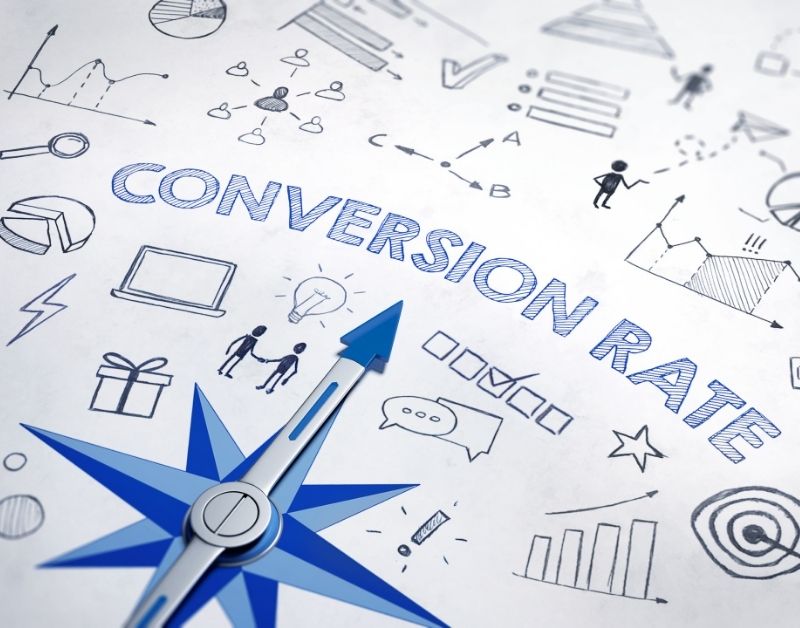Whether you’re just in the process of getting a website built for your business or seeking to update it, “optimizing the user experience” is surely a phrase you’re hearing a lot. It’s entirely unavoidable because the user experience (UX) largely dictates modern web design and development practices. Experts dedicate plenty of analysis, knowledge, and effort to ensure that websites respond adequately to users’ navigation patterns, online behaviour, and ultimately, to their innate logic.
Table of Contents
But optimizing the UX is an investment – which means that the figures need to add up. Even if you understand fully the gravity of UX and its huge ROI, you might have to convince others to accept this investment, or you might want to see clear, measurable proof of its impact on your bottom line.

What makes the process somewhat more confusing is that the concept of user experience focuses on intangible values (such as satisfaction) and thus, it seems immeasurable. But that’s not the case because there are actually metrics which will help you measure UX return on investment and gain insight into the impact of UX projects.
To help you get started, we’ve rounded up the 3 main metrics with which you can practically measure the ROI of UX efforts and present them when necessary.
1. Conversion rate
The ultimate purpose of any website is to drive conversions – whether it is converting visitors into customers, clients, or subscribers. Conversion rates are an important metric and measuring them goes hand-in-hand with measuring UX activities – it’s how you monitor directly what’s happening on your website and how well the site is doing its job.
The formula: number of conversions / number of site visitors * 100 = conversion rate (%)

Because the user experience is crucial to convincing your visitors to convert, this is how you will measure the relative impact that UX has on your KPIs. Randomized controlled A/B tests are conducted during user testing in order to help calculate the ROI of UX activities.
This is how we can see the relationship between UX efforts and the results they drive, noting how specific UX components influence user behavior. You can also set a relevant target conversion rate during the process of UX optimization and monitor how the optimization process has helped you reach your goal.
Need help with conversions? Hire Us
2. Drop-off rate
Oftentimes a visitor won’t follow the path you’ve defined in your conversion funnel, without necessarily leaving your website. Google analytics refers to this instance as a “drop-off” and it’s an important metric to monitor because it will help you identify the steps in your conversion funnel that need improvement.
You can measure the drop-off rate with Google Analytics, where you create a separate segment for each step within the conversion funnel so that Google can indicate drop-offs step by step.
The formula: number of users / number of unique users in each segment * 100 = drop-off rate (%)
Once you have the drop-off rate calculated, you can run usability tests and analyse UX within the segments that are causing visitors to “drop off”. This will give you insight into what you can improve regarding UX design in order to optimize conversion, and once you make these improvements you can analyse drop-off rates once again to show the causality.

However, if you’ve caught on to the growing popularity of video marketing and use videos in any step within your conversion funnel, you’ll need to do a bit of extra work – which will definitely pay off. Many experts advocate that VX (viewer experience) is the new UX as video content makes a convincing case for improving ROI, but only high-quality, ideally optimized videos have this kind of persuasiveness.
If you plan to have any kind of video content on your website, don’t rush the process. It’s best to explore your options first and research video production companies to find the experts who will help you create high- quality videos, as well as measure and optimize VX in order to meet modern-day standards. That way, you can fix glitches that your video content is causing in your conversion funnel or avoid them entirely.
quality videos, as well as measure and optimize VX in order to meet modern-day standards. That way, you can fix glitches that your video content is causing in your conversion funnel or avoid them entirely.
3. Single Usability Metric (SUM)
The Single Usability Metric allows you to measure errors in your UX process, giving you more insight than the drop-off rate can. It measures the 4 common usability metrics: task completion rates, task time, satisfaction, and error counts. The SUM calculator takes these raw metrics and converts them into a score with confidence intervals. It’s a great tool for understanding how your design choices are impacting navigation on your website and how avoiding certain UX errors will help optimize the conversion funnel.

By taking the time to measure the direct impact of your design on drop off rates and then optimizing it on a task-by-task basis, you’ll be able to improve your conversion funnel – and the ROI will automatically increase.
Staying Ahead of the Competition
UX activities do need to be measured and monitored all the time, not only to make a convincing case but also to help increase their ROI. It’s all a part of creating a seamless customer journey and winning over customers in a highly competitive landscape – a prospect won’t hesitate to jump over to your competitor’s website if yours offers a mildly frustrating experience. With the right metrics, tools, and experts on board, you can ensure you have the best strategy possible for UX optimization.
So what’s the latest trends in UX this year? Once you understand these three fundamental metrics and you’re successfully tracking ROI, it’s time to dig deeper and take a look at where the industry is heading to. That will help you continue to improve your UX and get a greater ROI out of your website in 2019.
Here’s a great infographic from our friends over at UK Web Host Review to help you get started optimizing your UX for conversions.










